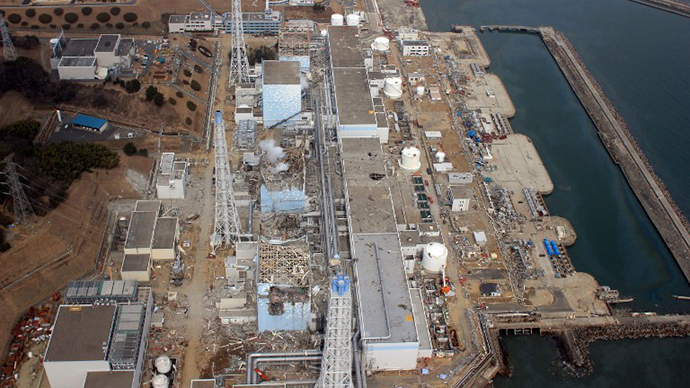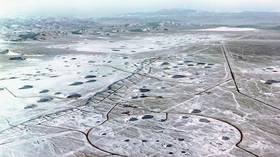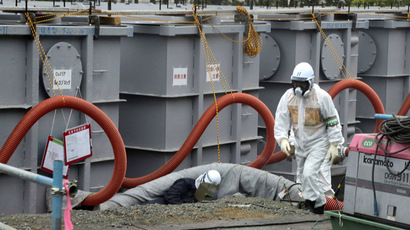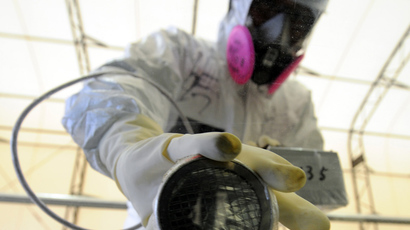Fukushima radioactive groundwater leak an ‘emergency’ – Japan’s nuclear watchdog

Embattled Fukushima operator Tepco has been accused of a “weak sense of crisis”, as its failing battle to prevent radioactive water from seeping into the seawater near the plant has become an “emergency”, according to the country’s nuclear watchdog.
“You can't just leave it [disposing of radioactive waste at
the plant] up to Tepco," Shinji Kinjo, head of a Nuclear
Regulatory Authority (NRA) told Reuters. "Right now, we have
an emergency."
Daily, 400 tons of groundwater percolates into the basements of
the plant, which was decimated by the Tohoku earthquake and
tsunami in March 2011. The seepage mixes with water used to cool
down the damaged reactors, before accumulating, and escaping out
into the Pacific Ocean.
For the past two years, Tepco claimed that it managed to siphon
off the excess water into specially built storage tanks, but late
last month admitted that toxic water was not contained.
The energy company, which is under financial pressure after being
handed an $11 billion clean-up bill for Fukushima, has
simultaneously hardened the earth around the plant with a special
chemical, creating an impenetrable barrier on the side of the
plant adjacent to the ocean.
But the shell is not complete: the technique only works 1.8
meters below the ground and further down.
So, water continues to build up inside the plant vaults, and will
eventually reach the unprotected subsoil and topsoil, as more
water goes in each day than is pumped out.
"If you build a wall, of course the water is going to
accumulate there. And there is no other way for the water to go
but up or sideways and eventually lead to the ocean," Masashi
Goto, a nuclear engineer who has worked at several Tepco plants,
told Reuters. "So now, the question is how long do we have?"
Asahi Shimbun newspaper reported that the toxic water could begin
spilling over within three weeks.
Kinjo refused to speculate about the exact timing, but said that
any radioactive water that escapes that way “will flow
extremely fast”.
Tepco is constructing a bypass that should decrease the
groundwater inflows into the plant.
It has also promised to begin pumping enough radioactive seepage
by the end of the week to stop the water level from rising. But
the company faces limitations, as its radioactive liquid storage
tanks are 85 percent full, and it has no clear plans to construct
more, or to turn the current makeshift facilities into permanent
ones.
“New measures are needed to stop the water from flowing into
the sea," emphasized Kinjo, who accused the energy giant of
failing to implement long-term solutions for a crisis that has
been going on for more than two years.
The impact of the radioactive water that has and will be released
into the Pacific is hard to estimate, as Tepco has been slow to
conduct studies and reluctant to release results to the public.
Last week, the company announced that it tested the release of
radioactive isotope tritium, and said that it was within the
legal limit. It now plans to test the sea water for cesium and
strontium, which are considered much more dangerous for humans
and the environment.














